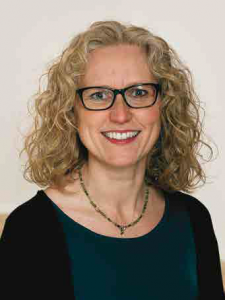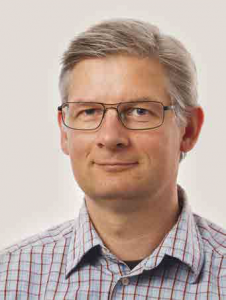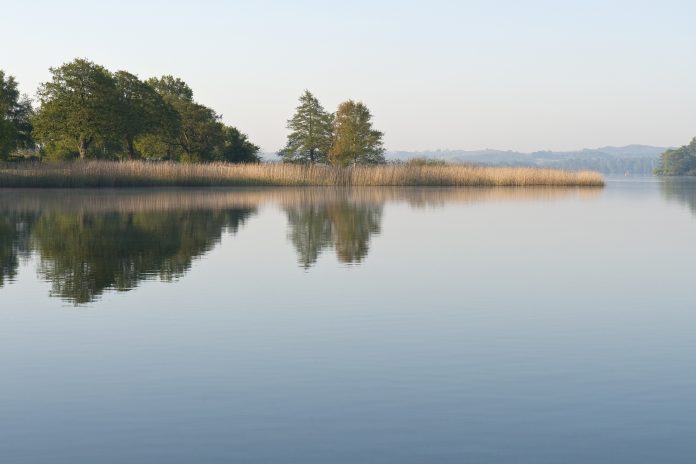Seed funds were used to clean up Skanderborg’s lake and have led to a new citizen-centric approach to water use and conservation. By Rune Kier Nielsen
The UN has warned that 80 percent of dirty wastewater runs untreated into lakes and rivers, negatively impacting nature, wildlife, human health and recreation. Yet from another angle, it may also demonstrate a new way to answer the old question: what is clean water really worth?

Friis-Holm, Section
Manager at Technological
Institute, Ph.d. and
project manager for Safe
Recreational Lake Waters
© Technological Institute
To find out, public and private partners – the Technological Institute, Aalborg University, Stjernholm A/S, Kilian Water, Amphi-Bac and Skanderborg Utility Ltd. – in the municipality of Skanderborg, Denmark set out with a US$710,000 budget to invest in a strategic collaboration under the project title ‘Safe Recreational Lake Waters.’
Starting in February 2016 collaborators began to measure the impact of wastewater in the local Skanderborg Lake. Over time, monitoring, treatment and an alert service helped make sure water would be clean enough for swimming. That general health target and threshold added value beyond any technical solution to gain local social, political, economic (tourism) value.
The primary challenge was to determine exactly how bacteria spread when wastewater spilled into the lake. Such knowledge would help in three ways. First, citizens would gain safety alerts before entering the water for a swim. Second, officials would know where to localise treatment. And finally, the utility could prioritise work by using separate sewers, for stormwater and wastewater.
The project logged every overflow into Skanderborg Lake, charting wastewater’s impact. The log data was combined with applied meteorological wind and precipitation data as well as both expected hydraulic flows and the number of overflows in the lake. The result was a complex predictive model that would show when overflow would impact the quality of water used for swimming at designated spots.
Water flow was then verified in a novel way, using GPS tracking of mobile phones following the currents in the lake. Further tests took water samples using both traditional methods and a drone boat. Pilot trials used two filtration technologies: a plant-based filter and a compact modular treatment system.
A few surprising results emerged. Before, the utility was often criticised for the poor water quality in the lake. Yet unexpectedly, the tests showed very low concentrations of E. coli and enterococci in the water caused by the overflow. Tests showed Skanderborg Lake’s water quality to be excellent. Current waste water spills, caused by extreme rain, apparently had little to no effect on the quality of the lake waters. The modest effect of algae was not associated with the overflow.
The plant-based filter — while effective at filtering organic matter nitrogen and E. coli at a steady flow of 12 m 3 / day — was challenged when faced with peak flows generated by an overflow. The compact modular (drum) filter method needed to be disinfected. The compact modular treatment system was able to withhold larger organic matter thus
reducing COD.
A few surprising results emerged. Before, the utility was often criticised for causing poor water quality in the lake. Yet unexpectedly, the tests showed very low concentrations of E. coli and enterococci in the water caused by the overflow
Dimensions proved important in terms of hydraulic impact and treatment demand. By adding 15 μ/L peracetic acid as a disinfectant after filtering, it was possible to reduce the concentration of E. coli sufficiently to eliminate the overflow as a risk factor for healthy bathing in the lake.
Four years ago, people built a floating pier on Skanderborg Lake right in front of its cultural centre. It was small and temporary, yet very popular. Results from the project showed it was possible, even attractive, to create a more permanent and comprehensive solution that leverages the lake’s water attractions as a cornerstone that links the city to a bathing centre and the public Lake Square.

Jonassen, Engineer at
Skanderborg Utility Ltd.
and project owner of Safe
Recreational Lake Waters
© Skanderborg Utility Ltd.
Lake Square will span 1,900 m² with three protected pools for swimming and access to the actual lake. Divers can plunge from balconies four metres high. The waters will encourage stand-up paddleboards, kayaking, sauna and meeting rooms, and connect to the city centre through a 910 m2 cultural area, with playgrounds, and event buildings, and expansion of the cultural centre.
Regardless of age and ability, the goal is to unlock water’s value to the citizens.
Skanderborg Utility annually asks customers for their views. While satisfied, few people really know who delivers, treats, or adapts their water to climate change. Last year that changed. In the 2017 survey one question was: “Would you want to contribute to the further development of your utility?” An unexpectedly high number –one-third of residential and business customers–were prepared to invest.
Going further, on this year’s World Water Day an “end user panel” was set up for a lively evening that generated ideas and discussions about how to create the smart water city that meets customer needs. Looking ahead, the utility will soften the water, protect the source, and separate wastewater from rainwater in the sewage.
Yet it will also help customers better understand what’s behind the price they pay – the real value of water. That is, after all, what they expect and deserve.








